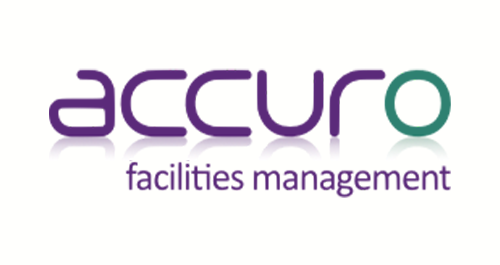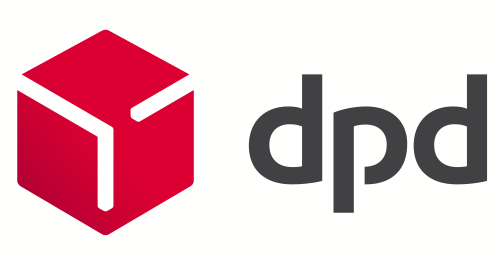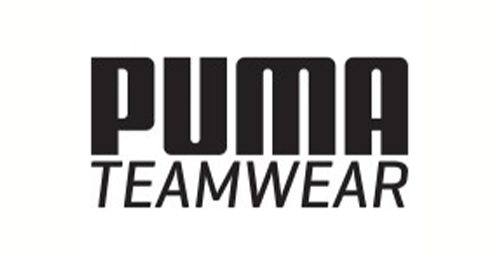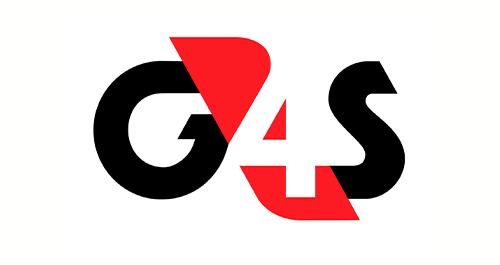- Products
- Authentication
- Networking
- Managed Services
- Brands
- Help
- News
Below is the list of current role permissions that can be used to comprise roles in Secret Server:
Access Offline Secrets on Mobile
Allows a user to cache their Secrets in the Secret Server mobile application for offline use.
Add Secret
Allows a user to create new Secrets. The Add permission no longer include the role permission View Secret.
Add Secret Custom Audit
Allows a user to make a custom audit entry when accessing a Secret using the web services API.
Administer Active Directory
Allows a user to view domains, edit existing domains, delete domains, and add new domains. Also allows a user to force synchronization or set the synchronization interval.
Administer Backup
Allows a user to view and configure automated backups for Secret Server. Users with this role permission can change the backup path, disable backups, and set the backup schedule.
Administer Configuration
Allows a user to view and edit general configuration options. For example, a user with this role permission can turn on “Force HTTPS/SSL” and disable “Allow Remember Me”.
Administer Configuration Proxying
Allows a user to view and edit SSH Proxy settings.
Administer Configuration SAML
Allows a user to view and edit SAML integration settings on the Login tab of Configuration settings.
Administer Configuration Security
Formerly “Administer Security Configuration,” allows a user to view and edit security configuration options in Secret Server. Currently, these include enabling FIPS compliance mode and protecting the encryption key.
Administer Configuration Session Recording
Allows a user to view and edit session recording settings on the Session Recording tab of Configuration settings.
Administer Configuration Two Factor
Allows a user to change the configuration settings of the two factor authentication that are available for users logging into Secret Server.
Administer Configuration Unlimited Admin
Formerly “Administer Unlimited Admin Configuration,” allows a user to turn on Unlimited Admin Mode. When this mode is enabled, users with the “Unlimited Administrator” role permission can view and edit all Secrets in the system, regardless of permissions. Note that you can assign “Administer Unlimited Admin Configuration” to one user and “Unlimited Administrator” to another user. This would require one user to turn on the mode and another user to view and edit secrets.
Administer ConnectWise Integration
Allows a user to view and edit configuration options for synchronizing with ConnectWise. This can be accessed through the “Folder Synchronization” link on the Administration page.
Administer Create Users
Allows a user to create new local users in Secret Server, but not edit them once created.
Administer Custom Password Requirements
Allows a user to view and edit custom password requirements that can be configured under the Security tab for individual Secrets.
Administer Discovery
Allows a user to view and import computers and accounts that are found by Discovery.
Administer Distributed Engine Configuration
Allows a user to update the Distributed Engine configuration.
Administer DoubleLock Keys
Allows a user to view, edit, create, and disable DoubleLock keys. A DoubleLock key acts as a separate encryption key to protect your most sensitive secrets. This option allows users to access and use the “DoubleLocks” link on the Administration page.
Administer Dual Control
Allows a user to view, edit, create, and disable Dual Control settings for reports and recorded sessions.
Administer Event Subscriptions
Allows a user to view, edit and create event subscriptions.
Administer Export
Allows a user to view the export log. Also allows users to export Secrets to which they have access to a clear text, CSV file.
Administer Folders
Allows a user to view, edit, create, move, and delete folders. Users still need the relevant view, edit, and owner permissions on the folders to perform these tasks.
Administer Groups
Allows a user to view, edit, create, and disable groups. Also allows users to assign users to groups and remove users from groups.
Administer HSM
Allows a user to change configuration or disable the use of a Hardware Security Module (HSM).
Administer IP Addresses
Allows a user to create, edit, and delete IP Address Ranges. These ranges are used to restrict certain users to specific IP Addresses.
Administer Languages
Allows a user to change the default language of Secret Server.
Administer Licenses
Allows a user to view, edit, install, and delete licenses.
Administer Nodes
Allows a user to view and edit server nodes and clustering settings.
Administer Password Requirements
Allows a user to view and edit character sets and password requirements.
Administer Remote Password Changing
Allows a user to turn HeartBeat and Remote Password Changing on and off globally. Also allows users to create new password changers and install password changing agents on remote machines.
Administer Reports
Allows a user to view, edit, delete, and create reports. Also allows users to customize report categories.
Administer Role Assignment
Allows a user to view which users and groups are assigned to which roles. Also allows users to assign users and groups to different roles.
Administer Role Permissions
Allows a user to view, edit, create and delete roles. Also allows users to assign different permissions to each role.
Administer Scripts
Allows a user to view, edit, and add PowerShell, SQL, and SSH scripts on the Scripts Administration page.
Administer Search Indexer
Allows a user to view and edit search indexer options. These options control how searching in Secret Server works. For example, a user with this role permission could enable search indexing, which allows users to search on fields within a secret.
Administer Secret Policy
Allows a user to create and edit Secret Policies.
Administer Secret Templates
Allows a user to view, edit, disable, and create Secret Templates.
Administer Security Analytics
Allows a user to view and edit the settings for Privilege Behavior Analytics.
Administer Session Monitoring
Allows a user to view and terminate active launcher sessions.
Administer Ssh Menus
Allows a user to edit and create SSH Menus, used in whitelisting commands that can be used on a SSH session.
Administer System Log
Allows users to view and clear the System Log, which shows general diagnostics information for Secret Server.
Administer Template Custom Columns
Allows a user to enable the “Expose for Display” setting of a Secret template field to make it available for use in Dashboard custom columns.
Administer Users
Allows a user to create, disable, and edit users in the system.
Advanced Import
Allows a user to import Secrets from an XML file.
Allow Access Challenge
Allows a user be challenged by Privileged Behavior Analytics if their behavior deviates from their normal behavior and meets certain requirements set by Privileged Behavior Analytics.
Assign Secret Policy
Allows a user to assign Secret Policies to folders and Secrets.
Copy Secret
Allows a user to copy secrets.
Create Application Account
Allows a user to create application user accounts to be used exclusively for accessing Secret Server via the API.
Create Root Folders
Allows a user to create new folders at the root level of the folder structure.
Delete Secret
Allows a user to mark secrets as deleted.
Delete Secrets from Reports
Allows a user to run the delete Secrets action from a report.
Edit Secret
Allows a user to edit secrets. Note that they still require the “Edit” or “Owner” permissions on the individual secrets they are editing.
Expire Secrets from Reports
Allows a user to expire Secrets listed in a report.
Force Check In
Allows a user to force a Secret that is checked out by another user to be checked in.
Own Group
Allows a user to be an owner of a group. This permission is in the default Group Owner role, which is automatically assigned when that user is set as owner of a group.
Own Secret
Formerly “Share Secret”, allows a user to share secrets with other users. Also allows users to perform more advanced tasks on secrets of which they are “Owners”, such as configuring expiration schedules, configuring the web launcher, converting secret template, and copying secrets.
Own User
Allows the user to become a user owner, used to configure specific users without the Administer Users permission.
Personal Folders
Allows a user to have personal folder when the global personal folders configuration options is enabled.
Privilege Manager Administrator
Allows the user to have the ‘Administrator’ role for Privilege Manager, giving full access to the system.
Privilege Manager Helpdesk User
Allows the user to have the ‘Help Desk’ role for Privilege Manager, giving full access to approve or deny escalation requests.
Privilege Manager User
Allows the user to have the ‘User’ role for Privilege Manager, giving read and write permissions to most items, but not rights to modify security permissions.
Rotate Encryption Keys
Allows a user to start a process that rotates the Secret encryption keys.
Unlimited Administrator
Allows a user to view and edit all secrets in the system, regardless of permissions, when Unlimited Admin Mode is on. Note that another user with the “Administer Unlimited Admin Configuration” role permission would still need to turn this mode on.
User Audit Expire Secrets
Allows a user to view the “User Audit” report, which shows all secrets that have been accessed by a particular user in a specified date range. Also allows the user to force expiration on all these secrets, which would make Secret Server automatically change the password.
View About
Allows a user to view the “About” page from the Help menu, which links to external resources such as Technical Support and the Thycotic blog.
View Active Directory
Allows a user to view, but not edit, the Active Directory settings in the system.
View Advanced Dashboard
Allows a user to view advanced dashboard. Without this permission, users will only be able to view basic dashboard.
View Advanced Secret Options
Allows a user to view the Remote Password Changing, Security, and Dependency tabs on a Secret they have access to.
View Backup
Allows a user to view, but not edit, the automated backup settings.
View Configuration
Allows a user to view, but not edit, general configuration settings.
View Configuration Proxying
Allows a user to view, but not edit, SSH Proxy settings.
View Configuration SAML
Allows a user to view SAML integration settings on the Login tab of Configuration settings.
View Configuration Security
Formerly “View Security Configuration,” allows a user to view the security configuration of Secret Server.
View Configuration Session Recording
Allows a user to view session recording settings on the Session Recording tab of Configuration settings.
View Configuration Two Factor
Allows a user to view the configuration settings of the two factor authentication that are available for users logging into Secret Server.
View Configuration Unlimited Admin
Formerly “View Unlimited Admin Configuration,” allows a user to view the Unlimited Admin Mode configuration. Also allows a user to view the Unlimited Admin Mode audit log.
View ConnectWise Integration
Allows a user to view, but not edit, the ConnectWise integration settings.
View Deleted Secrets
Allows a user to view Secrets that have been deleted in the system.
View Discovery
Allows a user to view, but not edit, computers and accounts that are found by Discovery.
View Distributed Engine Configuration
Allows a user to view the Distributed Engine configuration.
View DoubleLock Keys
Allows a user to view which DoubleLock keys exist in the system.
View Dual Control
Allows a user to view configured Dual Control settings for reports and Secret sessions.
View Event Subscriptions
Allows a user to view event subscriptions.
View Export
Allows a user to view the export log of the system to see when users exported secrets. Does not allow a user to export.
View Folders
Allows a user to view, but not edit, folders in the system.
View Group Roles
Allows a user to see which groups and users are assigned to which roles. Does not allow a user to change these assignments.
View Groups
Allows a user to see which groups exist in the system. Also allows a user to see which users belong to each group.
View HSM
Allows a user to view the Hardware Security Module (HSM) configuration settings.
View IP Addresses
Allows a user to view IP Address Ranges that have been created to restrict access. Does not allow a user to edit these ranges.
View Launcher Password
Allows a user to unmask the password on the view screen of secrets with a launcher. Typically, this includes Web Passwords, Active Directory accounts, Local Windows accounts, and Linux accounts.
View Licenses
Allows a user to view, but not edit, the licenses in the system.
View Nodes
Allows a user to view, but not edit, the Secret Server web server nodes.
View Password Requirements
Allows a user to view character sets and password requirements.
View Remote Password Changing
Allows a user to view, but not edit, HeartBeat and Remote Password Changing settings.
View Reports
Allows a user to view, but not edit, reports.
View Roles
Allows a user to view roles in the system. Also allows a user to see which groups are assigned to which roles.
View Scripts
Allows a user to view PowerShell, SQL, and SSH scripts on the Scripts Administration page.
View Search Indexer
Allows a user to view, but not edit, search indexer settings.
View Secret
Allows a user to only view which Secrets exist in the system.
View Secret Audit
Allows a user to view Secret Audit.
View Secret Policy
Allows a user to view, but not edit, Secret Policies.
View Secret Templates
Allows a user to view, but not edit, Secret Templates.
View Security Analytics
Allows a user to view, but not edit, settings for Privilege Behavior Analytics.
View Security Hardening Report
Allows a user to view and edit session recording settings on the Session Recording tab of Configuration settings.
View Session Monitoring
Allows a user to view active launcher sessions.
View Session Recording
Allows a user to view recorded sessions within Secret Server.
View Ssh Menus
Allows a user to view existing SSH Menus, used in whitelisting commands that can be used on a SSH session.
View System Log
Allows a user to only view the System Log, which shows general diagnostics information for Secret Server.
View User Audit Report
Allows a user to view, but not edit, the User Audit Report.
View Users
Allows a user to view which users exist in the system.
Web Services Impersonate
Allows a user to send an approval request to act as another user within their organization when accessing Secret Server programmatically.













